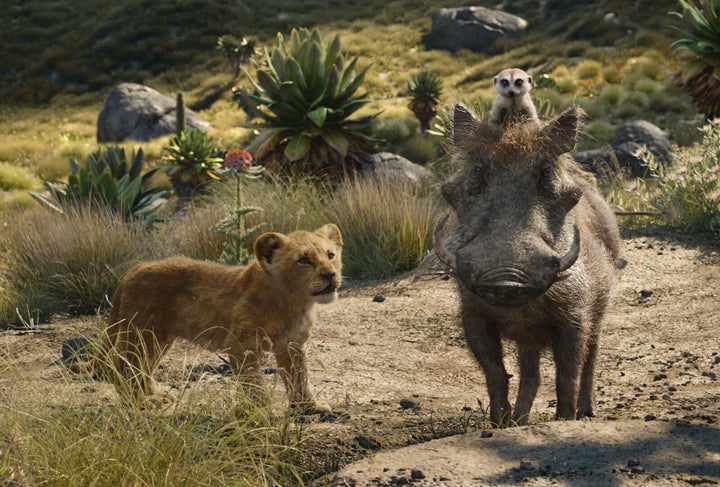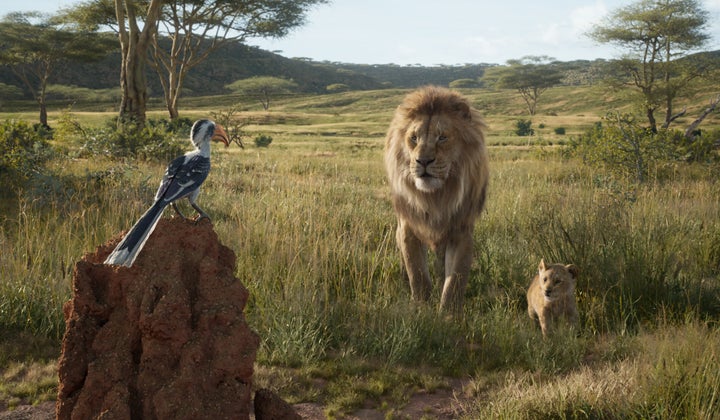
As if it’s 1994 all over again, “The Lion King” is monopolizing pop culture. For two consecutive weeks, Disney’s pseudo-live-action remake has conquered the box office, already accumulating $1 billion in global grosses. This time around, no one can claim they’re surprised.
Audiences may be satisfied with Jon Favreau’s photorealistic take on Simba and the gang, but what about the animators responsible for the original? After all, much of the new film mimics their imagery shot for shot, which is either a welcome dose of technologically sophisticated nostalgia or a creatively inert exercise in uncanny redundancy.
That more or less sums up the dividing line: love it or hate it.
I reached out to 13 artists who contributed to the first “Lion King.” Of the animators who responded to my emails, three had seen the current adaptation and agreed to talk on the record. Three others said they were not planning to see it at all, a stance that can be interpreted as an act of protest. “I will only get myself in trouble if I comment on the ‘other’ version,” one animator now employed at a rival studio said. Another responded, “There is a huge resentment against these 3D remakes from the original 2D crews. Maybe if we got any kind of royalties it would be different.”
David Stephan, who in the early ‘90s contributed to the opening “Circle of Life” sequence and the hyenas’ design, summed up the “hate it” camp succinctly, saying, “If you polled the crew of the original ‘Lion King,’ most of them would say, ‘Why? Did you really have to do that?’ It kind of hurts.”
Of course, we’ll never know if such a poll would actually confirm Stephan’s hypothesis. Alexander Williams, who worked on the initial Scar, and Dave Bossert, who did visual effects throughout the movie, are far more “hakuna matata” about the whole thing. Both adore Favreau’s edition.
“Overall, I thought the film stands on its own,” Bossert said. “It not only showcases a great story again, but it’s an homage to the original film.”
In separate interviews, Williams, Stephan and Bossert offered assorted thoughts on the mega-blockbuster redux.

The Merits Of A Live-Action-Seeming ‘Lion King’ Remake
Williams: “I think some of my colleagues forget that when you work on a Disney movie, you don’t own it. They own it. You get paid to work there, which is a great privilege. It’s an amazing company. You get to work on this great stuff. But when you walk away, it’s their movie and they can do what they want with it. So as far as I’m concerned, it’s kind of none of my business whether they want to remake it or not.”
Stephan: “It’s sort of sad that the stockholder is now in the room deciding what movies get made. … Disney’s now taken the cover off, and it’s now in your face: ‘Yeah, we just want to make money.’ That’s disappointing as an artist, from a studio that was founded on originality and art.”
Bossert: “I view it as what Walt [Disney] did when he was building the company. He constantly reused and recycled great stories. It’s very evident if you look at when he built Disneyland. He took properties like ‘Peter Pan,’ ‘Alice in Wonderland’ and ‘Cinderella’ and he created immersive theme-park attractions, and all the merchandise and books and other things that came along with it. He kind of invented that stuff. … The fact is, they’re taking these great stories and they’re creating them in different entertainment arenas.”
The Realistic Aesthetics
Williams: “Don’t forget, at the time of ‘The Lion King,’ there was groundbreaking digital animation going on. The wildebeests, for example, were all computer-generated, and that was considered very radical and advanced for its time. So I don’t think you can mourn the old days too much because everyone’s always itching to do it better.”
Stephan: “I’m a big fan of fine art, and you can see the Impressionists move through the early 19th century and then the Jackson Pollocks into the ’40s and ’50s. And then there was a period in the ’60s where they went really hyperrealism, almost like photographs. That was an evolution. And now it’s like, ‘Well, look, let’s take this great Monet and let’s paint it like it really should look like.’ And that’s like, ‘Well, why? What’s different other than it’s real?’”
Bossert: “Visually, it’s stunning … In some instances, it’s a shot-by-shot version of the original animated film, and that didn’t bother me at all because I think the filmmakers were staying faithful to the original property. The faithfulness to the original animated film certainly endears it to the audience, without question.”

The Voice Performances
Williams: “They were very, very good. I think they did a really nice job. … These movies are not really made by the actors. They’re probably never on set. They’re taping in recording booths for a few hours, and that’s it. That’s their entire contribution. Obviously it’s a very important contribution, but their actual role in the movie is relatively small compared to the artists who might toil for a few years.”
Stephan: “I thought the performances were weak. I mean, they were so wooden. [The filmmakers] put themselves into a corner when you do that realistically. You’re really stuck to what the real physics are in real life, or people aren’t going to buy it. But there were a few scenes where there were a couple of expressions and suddenly it was a little more alive.”
Bossert: “I love the fact that they kept James Earl Jones from the original as Mufasa. That was terrific. It’s a sort of homage to the original film. I thought the voice characterizations were terrific across the board. There wasn’t anything that struck me as being odd at all. I particularly liked John Oliver as Zazu and Seth Rogen as Pumbaa.”
The Character Design
Williams: “Certain parts of the animation are breathtaking. These are still hand-crafted films. I mean, forget about the tech. You’ve still got a room full of artists trying to make every pixel look beautiful. It’s not easy to get that right. So I say the tech is part of the message now because it’s so impressive now what can be done. …. It feels like you’re in a David Attenborough world: documentary footage, and yet the animals were talking and emoting.”
Stephan: “It would jar me out of the film, literally. Especially with little Simba walking around. It was too real. And then when he would talk, it reminded me of those old nature films where they would dub the voices over and the lips would move. I thought, ‘Oh, this is really cheap.’ I think it was just too soon for this one. … I just came away going, ‘Wow, that was a great story that I worked on back in ’93.’ … How come the apes in ‘Planet of the Apes’ look so much more alive than the animals in ‘Lion King’? This one just said, ‘You know what, let’s cut the expressions out completely. Let’s just keep it real as possible.’ And I think it just diminished the film.”
Bossert: “I wish they had a little bit more emotion in the characters’ eyes. If you’ve got animals talking, you can take more liberties with facial expressions. … Really with the eyes more than anything else. When a character is talking, the eyes could open a little more, or an eyebrow could raise a little bit. You’re walking a fine line where you don’t want it to be too cartoony, but I think they could have pushed it a little bit more.”

What This Technology Means For The Future Of Filmmaking
Williams: “That is a game-changing level of technical skill in my view, in the same way that I think ‘Life of Pi’ [was] a few years ago. That raised the bar for everyone. So now they’ve taken that bar and they’ve raised it still further.”
Stephan: “The live-action world’s going to get a wake-up call. Somebody ― probably like [James] Cameron ― will do a whole live-action film where it’s all computerized. They’re going to start to create actors in the digital world. … if you look at ‘The Polar Express,’ that was really stiff also, the Tom Hanks character. The technology wasn’t there yet because of the dead eyes. But it is now. Think how far we’ve come in the last 10 to 15 years, technology-wise. I mean, Marvel? I’m not sure if you can call those live-action anymore.”
Bossert: “Ten or 20 years from now, we may be seeing a holographic, immersive experience of ‘Lion King’ because, whatever the new technology will be 10 or 20 or 30 years from now, they’ll be able to recreate this story in that new medium and tell the story from a new vantage point. … A lot of people are talking about the new ‘Lion King’ movie and Disney doing all these remakes and ‘Oh my gosh, what’s going on here?’ When I walked away from that theater, what I thought about is that the photorealism is becoming so good that it’s only a matter of time before they’re creating really convincing human characters. They’re not there yet, but they’re getting closer. It’s a far cry from the soulless characters that were in ‘The Polar Express’ a number of years ago.”
